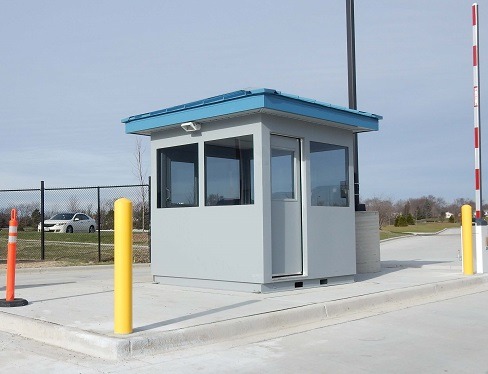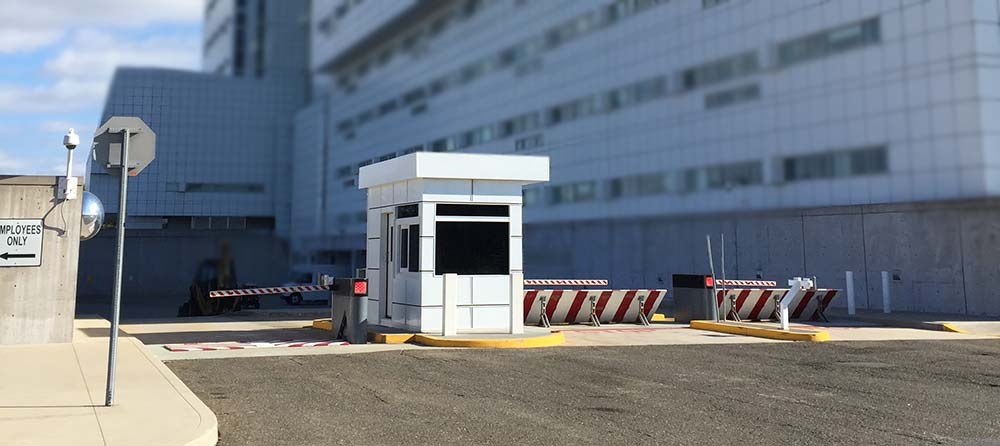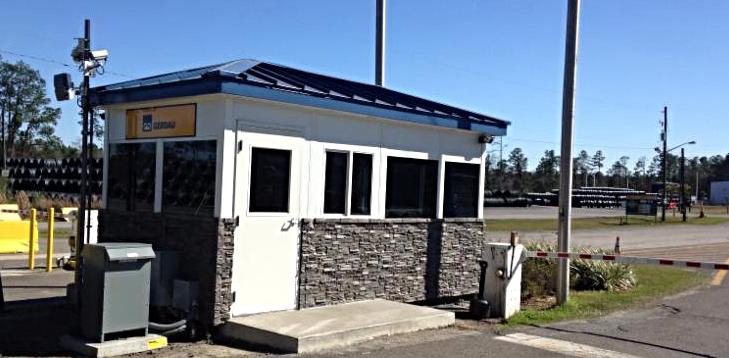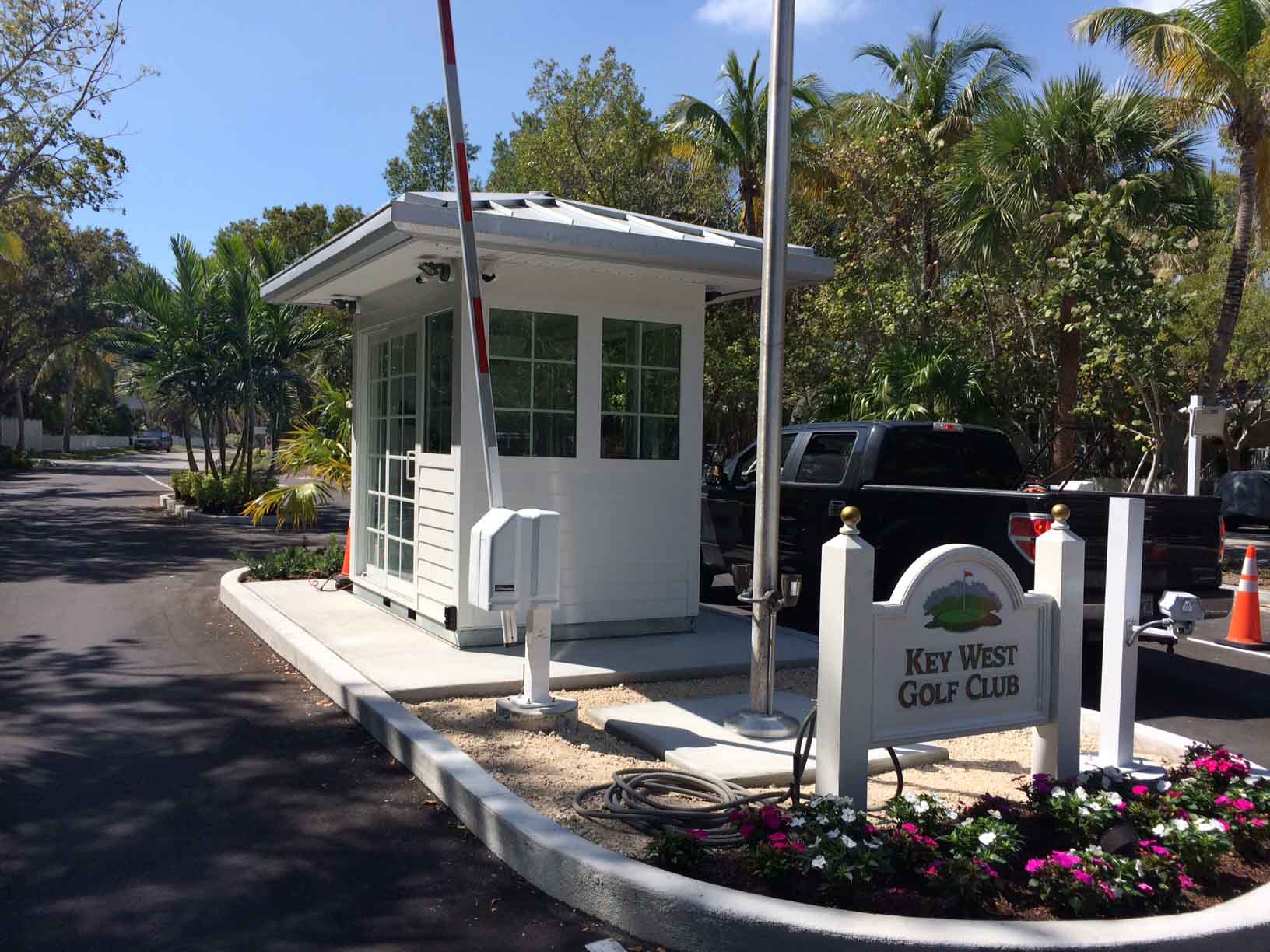Perimeter Security Overview: The Basics
Over the past couple of decades, physical security has risen in technology and in its overall presence in a variety of industries. Valuable assets are always at risk of being a target, including information, goods, services, and people. A fully functional perimeter security system uses a variety of active and passive barriers to maximize the access control of the facility and ensure only appropriate parties are allowed to enter the property. Overall, one of the biggest and most challenging goals of developing a perimeter security system is maximizing the overall security of the facility without diminishing the efficiency, function, and even aesthetics of the area.
1. Perimeter Barrier

For a perimeter barrier, the first thing that comes to mind will be fencing around the facility, however, there are a number of different options available for facilities. There are two main types of barriers that facilities use: passive barriers and active barriers. Fixed barriers act as passive barriers by denying entry to a vehicle, person, or thing. Passive barriers include all of the following: fences, walls, moats, bollards, heavy trees, or even just big rocks. Each of these barriers can accomplish different things. For the majority of them, they do a great job of keeping out all types of traffic (except flying). However, in the instance of bollards, the area allows for the passage of foot traffic, but no vehicles to pass through.
Overall, the main goal of the perimeter barrier is to protect the facility with a limited number of access points to a number that you can easily and actively control. In some cases, a standard fencing could be enough to protect the facility, keeping out potential intruders or animals. But in high threat areas, reinforced walls may be needed to protect against forced entry.
2. Active Barriers

Active barriers are primarily found in a facility’s access control points. Active barriers are usually a type of mechanized gate/entry system that can control the flow of traffic manually or automatically. The main form of active barriers that most people associate with are the pivoting arm gates seen at the entrances of many facilities. These systems are not typically heavy duty, however, will be adequate for structures like parking decks. The downside is if a vehicle really needs to, it can oftentimes go right through it. For this reason, a variety of “heavy duty” active barriers are offered on the market to prevent this from happening.
For example, crash gates, retracting bollards, retracting wedge barriers, and crash rated drop arms all protect against vehicle ramming and battering. With the some of these active barriers, they can be set to close the entryway automatically (in a fraction of a second) at the approach of a rapid oncoming vehicle, thus preventing unlawful entry.
3. Access Control Point

The access control points of a facility will feature the culmination of your facility’s active barriers and access control system. A well-equipped access point should include guard booth(s), communication devices, a surveillance system, active barriers, instructional signage with directions, and appropriate lighting. For a facility, ideal access control points will keep out unauthorized people and vehicles, while not disrupting the flow of traffic into and out of the facility. In some cases, this will require a facility to have multiple access control points, which can be an appropriate solution (especially if the point is designed for specialty or commercial vehicles), but the higher number of access points, the higher chance of screening failure.
An often-overlooked part of access point design is vehicle approach speed. Even the highest level of perimeter security can fail if a vehicle has enough momentum going through an access point. For this reason, FEMA suggests the use of curved roadways, traffic circles, speed bumps, raised crosswalks, or pavement treatments to reduce vehicle speed ahead of the access point. Additionally, bollards can be used around the guard house to protect it from a major impact. Security alerts can be set up before the entry of the gate to alert guards of oncoming cars moving at a high rate of speed. This would allow for extra time to ensure all active barriers are up and the perimeter is secure by the time the vehicle is intercepted.

When looking at the design of the access point’s guard house, a great deal of effort should go into ensuring the wellbeing and day to day comfort of the security officer. In all cases, the guard house should be designed to have a clear line of sight of the approach of any potential traffic. The guard house should provide the officer with proper protection against hostility at a level that is equal to the potential threat level. For example, at government buildings or military bases, the threat level is obviously much higher and will typically require the guard house to have a certain level of ballistic rated protection. The ballistic levels are standardized by Underwriters Laboratory, ranging from Levels 1 through Level 8.
Also, there are a variety of security products that can help security officers maximize the effectiveness of the facility’s overall perimeter. Intruder detection systems can be placed around the facility’s passive barriers, and CCTV systems do a great job of allowing officers to plot the movement of the threat. A facility should also have generous lighting throughout, especially along the perimeter and building entrances and exits, allowing security to have a clear field of vision even at night.
Overall, the well-designed perimeter security offers three main benefits to a facility:
First, the security system should deter many would-be intruders.
Example: If a potential intruder comes to a perimeter security barrier or wall system that is lined every few feet with security lights, he can probably safely assume this is a well-secured facility and that there is a good chance the intruder would be seen by security before/after attempting to breach the facility. So the attempt ends before it starts.
Second, the system should be able to detect and locate an intruder.
Example: The intruder was not deterred by the security system and manages to scale the passive barrier. Leaping to the other side of the wall and is greeted with more fixed security lights on the other side of the wall. With a properly set up intrusion detection system, alarm systems or CCTV. The intruder should be monitored by the security staff throughout the facility.
Third, the security team/police should be able to respond to the threat appropriately
Example: Using the information from the intrusion detection and CCTV systems, a trained security team should be able to follow the protocols and respond properly to a threat and notify the police, if necessary.
As mentioned previously, physical security has been of growing importance over the last few decades. Major terrorist attacks can be carried out by a single person. For this reason, careful planning and design of a perimeter security system are vital for ensuring as much protection as possible. A multi-layered security system requires the proper systems to deter, detect, and respond to these incidents.
Click here to request a free quote
and get your prefabricated project started!
For more information see: FEMA 430, Site and Urban Design for Security: Guidance against Potential Terrorist Attacks (2007)
